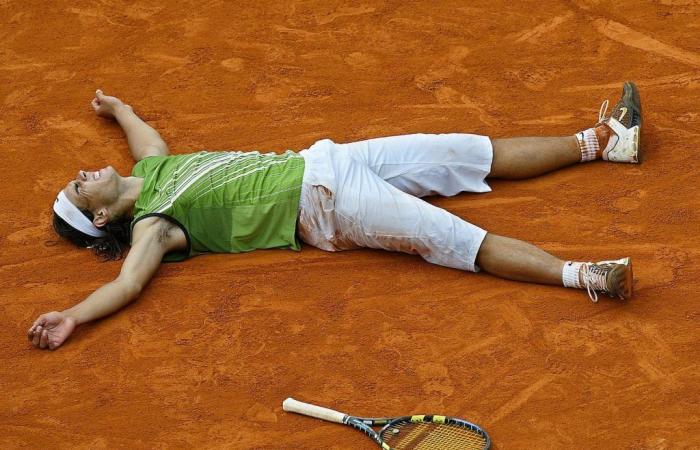The saga was not yet over when Rafael Nadal was already immortal. In May 2021, three years before the end of his career, made official on Thursday October 10, at the age of 38, the Spaniard inaugurated on the square in front of Roland-Garros a sculpture, created by his compatriot Jordi Díez Fernandez, staring into steel his legendary “lasso” forehand. From now on, it sets for eternity an absurd figure, going beyond the boundaries of tennis alone: fourteen coronations – between 2005 and 2022 –, relegating far to the memories the impassive Swede Björn Borg, whose six titles seemed for a long time out of reach.
“I am here to tell you that I am leaving professional tennis”declared Nadal in a video posted on his X account. In fact, he will put away his rackets after the Davis Cup final with Spain, scheduled for November 19 to 24 in Malaga.
Roland-Garros will remain the symbol of Rafael Nadal’s (almost) absolute monarchy on earth, his kingdom. Even if the land supremacy of this player – raised, ironically, by the sea – extended well beyond the French capital. On this surface, the Mallorcan law was merciless. The devastating power of his lift, this ability to rotate forward, made the ball squirt excessively. His innate knowledge of sliding had no equal.
For the opponent, stunned by the left-hander’s infernal pace, the outcome was almost always fatal. “Playing Nadal is a brutal experience. With each ball, the intensity is maximum, it has nothing to do with anyone, it’s a monster”summarized Richard Gasquet, in 2021. Born two weeks apart, the Biterrois is well placed to know this: in eighteen confrontations on the professional circuit, he has never managed to beat him.
For a long time, part of the public only saw him as a bull galloping like crazy behind every ball. The fault, too, of his outfitter, who had disguised him in the early years like a pirate in cropped pants, a tank top showing off his swollen biceps and a bandana taming his jet-black locks. But the most puzzling thing about Nadal is that his rage and aggression on the court were inversely proportional to his nature off it, polite and reserved to a fault.
Between the start of his Parisian reign in 2005, from his first participation, and its end nineteen years later, he left only four men – Roger Federer, Stan Wawrinka, Novak Djokovic and his young compatriot Carlos Alcaraz – s seize the Musketeers’ Cup. On “his” clay court, the Spaniard has 112 successes for four defeats (and one injury withdrawal in 2016 in the third round), or 96.4% victories.
You have 73.42% of this article left to read. The rest is reserved for subscribers.






